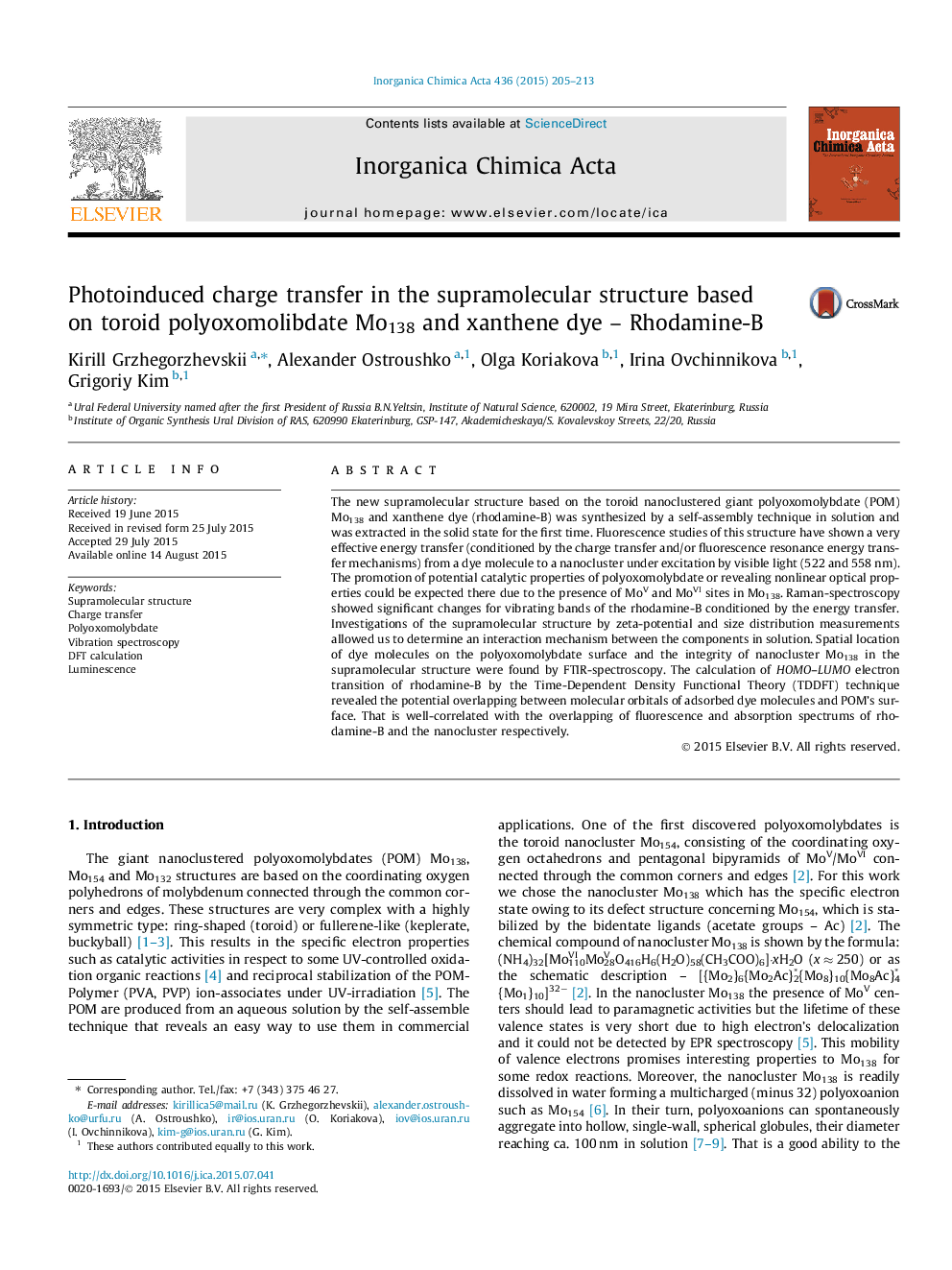| Article ID | Journal | Published Year | Pages | File Type |
|---|---|---|---|---|
| 1307644 | Inorganica Chimica Acta | 2015 | 9 Pages |
•The giant toroidal nanocluster Mo138 was functionalized by the xanthene dye.•The behavior of the ion-associate Mo138–Dye was studied in solution.•IR spectroscopy indicated the integrity of Mo138 and location type of adsorbed dye.•The luminescence quenching showed the significant charge transfer “Dye → Mo138”.•The charge transfer was confirmed by UV–Vis spectroscopy and TD-DFT calculation.
The new supramolecular structure based on the toroid nanoclustered giant polyoxomolybdate (POM) Mo138 and xanthene dye (rhodamine-B) was synthesized by a self-assembly technique in solution and was extracted in the solid state for the first time. Fluorescence studies of this structure have shown a very effective energy transfer (conditioned by the charge transfer and/or fluorescence resonance energy transfer mechanisms) from a dye molecule to a nanocluster under excitation by visible light (522 and 558 nm). The promotion of potential catalytic properties of polyoxomolybdate or revealing nonlinear optical properties could be expected there due to the presence of MoV and MoVI sites in Mo138. Raman-spectroscopy showed significant changes for vibrating bands of the rhodamine-B conditioned by the energy transfer. Investigations of the supramolecular structure by zeta-potential and size distribution measurements allowed us to determine an interaction mechanism between the components in solution. Spatial location of dye molecules on the polyoxomolybdate surface and the integrity of nanocluster Mo138 in the supramolecular structure were found by FTIR-spectroscopy. The calculation of HOMO–LUMO electron transition of rhodamine-B by the Time-Dependent Density Functional Theory (TDDFT) technique revealed the potential overlapping between molecular orbitals of adsorbed dye molecules and POM’s surface. That is well-correlated with the overlapping of fluorescence and absorption spectrums of rhodamine-B and the nanocluster respectively.
Graphical abstractThere is the interaction between the xanthene dye (Rhodamine-B) and the giant nanoclustered polyoxomolybdate (Mo138) which leads to formation of the ion-associate with energy (charge) transfer induced by the visible light.Figure optionsDownload full-size imageDownload as PowerPoint slide
